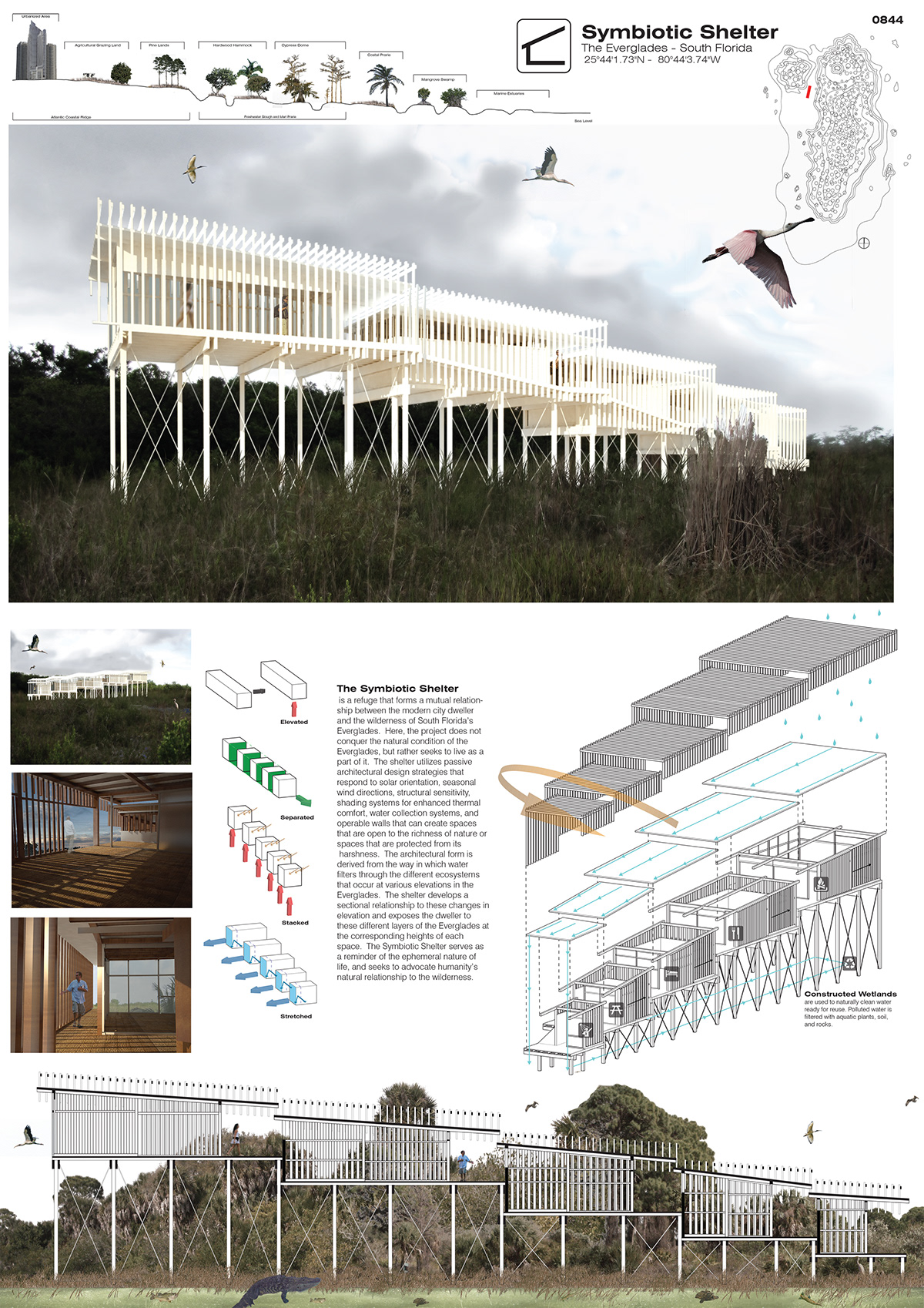
2011 - 13th Annual International Architectural Shelter Competition
Brief:
In ancient times we lived with the Wilderness, fighting against its severity and its roughness, and receiving the benefits of its fertility. The wildness of nature was directly related to our lives. In our current age, we live in cities. A city is a large, man-made environment, in which we no longer think much about the power of nature, except when we are shocked by occasional natural disasters, such as storms, floods, droughts and earthquakes. However, we still instinctively recall the lives of our ancestors, and have complex feelings of fear and yearning for life in the Wilderness.
Design “A house to live in the Wilderness”, for modern city dwellers – which are us. The Wilderness can be of any type: deep forest, thick forest, a vast meadow in the African savannah, the South Pole, a desert, or in the sea. Or, you can design a shelter against natural disasters such as storms, earthquakes or heavy snow. The structure of the house can be timber, masonry, rammed earth, or ? if necessary – it can be made with the super-alloys that are used for spaceships. Suggest a house in the Wilderness, in which we modern-age humans can feel both the richness and the toughness of the Wilderness, and sense our relationship to it.
Proposal:
Team: Richard Brewer + Robert Mosby
The Symbiotic Shelter is a refuge that forms a mutual relationship between the modern city dweller and the wilderness of South Florida’s Everglades. Here, the project does not conquer the natural condition of the Everglades, but rather seeks to live as a part of it. The shelter utilizes passive architectural design strategies that respond to solar orientation, seasonal wind directions, structural sensitivity, shading systems for enhanced thermal comfort, water collection systems, and operable walls that can create spaces that are open to the richness of nature or spaces that are protected from its harshness. The architectural form is derived from the way in which water filters through the different ecosystems that occur at various elevations in the Everglades. The shelter develops a sectional relationship to these changes in elevation and exposes the dweller to these different layers of the Everglades at the corresponding heights of each space. The Symbiotic Shelter serves as a reminder of the ephemeral nature of life, and seeks to advocate humanity’s natural relationship to the wilderness.
